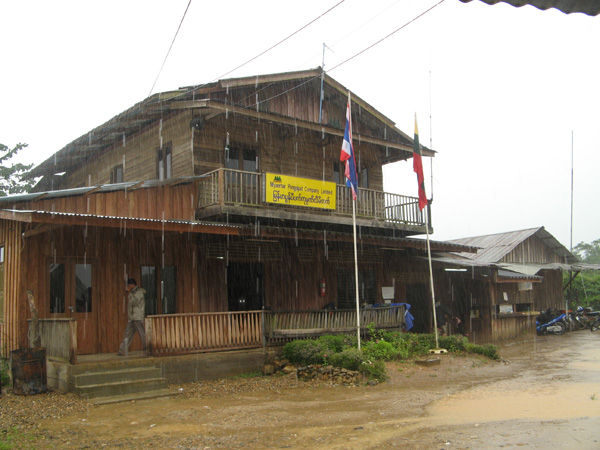Thai and Burma joint mining operation dirties village water

Villagers in the east of Tavoy, southern Burma claim authorities have ignored their complaints against a Thai company and a Burma government joint venture mining operation that has been polluting their drinking water for a decade.
A local villager from the affected area (who did not want to be named for his security) said.
“I could no longer use water from the stream and I now have to use the well. The water we used from the stream is made dirty by the mining up-stream near Heinda village. It’s muddy everyday of the whole year, every year ”
“I have to dig a well, all the villagers use the well. I had to spend at least 500,000 kyat for the well, but the company doesn’t help us. Our stream and river have been swallowed by the mud and sand from the mine, all the fish from the stream are gone.”

A Thai base company Myanmar Pongpipat Company Ltd. operates a tin and tungsten mining in Heinda, 45 kilometer east of Tavoy. The company has been there since July, 1999 after it was granted a contract from the Burma’s Ministry of Mines. The mining operation is a joint venture under the government’s Ministry of Mines.
The Heinda Mine concession area is 2087.06 acres – the mining sector is one the largest investment for the Burmese government.
The run-off from the mine affects 10 villages down from Heinda stream (Kay Ta) and Heindu (Kay Tu). Villagers say Heinda mine has been polluting the water for more than 10 years. They alleged Myaung Pyo village is the worse affected as it is closer to the the mine area.
Both the Heinda streams flow into the Banchaung (Paw Klo) and Kamoethway Rivers that form the Tenasserim River.
According to local villagers they claim they filed several complaints to the Burma Army Operational Command based in Myitta and Myitta Sub-township about the pollution, but nothing was done to improve the situation.
Villagers say the pollution is now getting worse. The alleged villagers down stream of the mine have had their plantations destroyed by flooding mud while others say their betel nut plantations were flooded because the mining company dammed the river for a reservoir.
Villagers say there are no environmental groups or non-governmental organizations to monitor or access the impact of the mining in the area nor is there any authority to enforce rules and regulations to the mining operators.
Villagers claim the operation is taking advantage of the lawless situation while villagers pay the price of the pollution daily.
A villager said.
“When the British operated the Heinda mine, they were better regulated and had a better system of managing the operation. Now the mine is getting bigger and the current operators do whatever they want without regard for any regulation and they don’t care about the people.”
The villager said all they want is to have access to water free from mine pollution.
“We want the company to be responsible and to compensate us for what they did. We want the company and the state to improve their management and environment protection systems.”
The Burma Environmental Working Group (BEWG), a working group of Burma ethnic environmental and social organizations say a lack of laws and regulations protecting the environment against the impacts of mining, poses a grave threat.
Under the new 2008 Constitution, Section 45 of Chapter 1 states that the government “…shall protect and conserve the natural environment”. The national legislature can, but does not need to, enact laws to protect the environment and help restore areas degraded or damaged by mining and forestry activities or those that have experienced destruction of plants, wildlife, and habitat add by the Constitution in Chapter 4, Section 96.
The 11 villages affected by the Heinda mine are Heinda, Lower Heinda, Ye Bu Wa, Heinda Byin, Seik Ku, Kay Ta, Myaung Pyo, Taung Tho Lon, Shwe Chaung, Ka Le Gi, Myitta.




